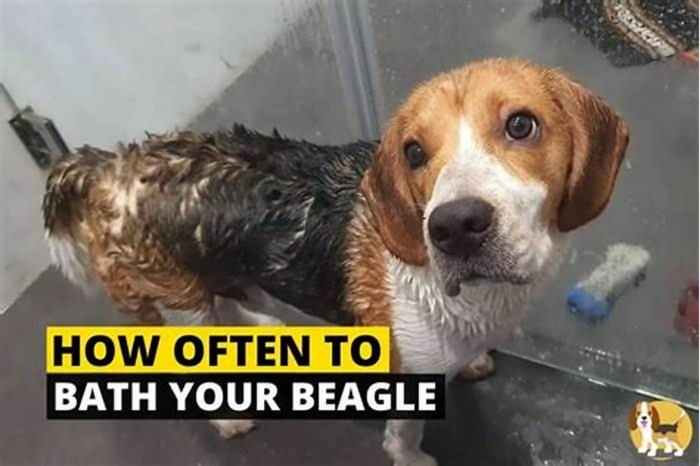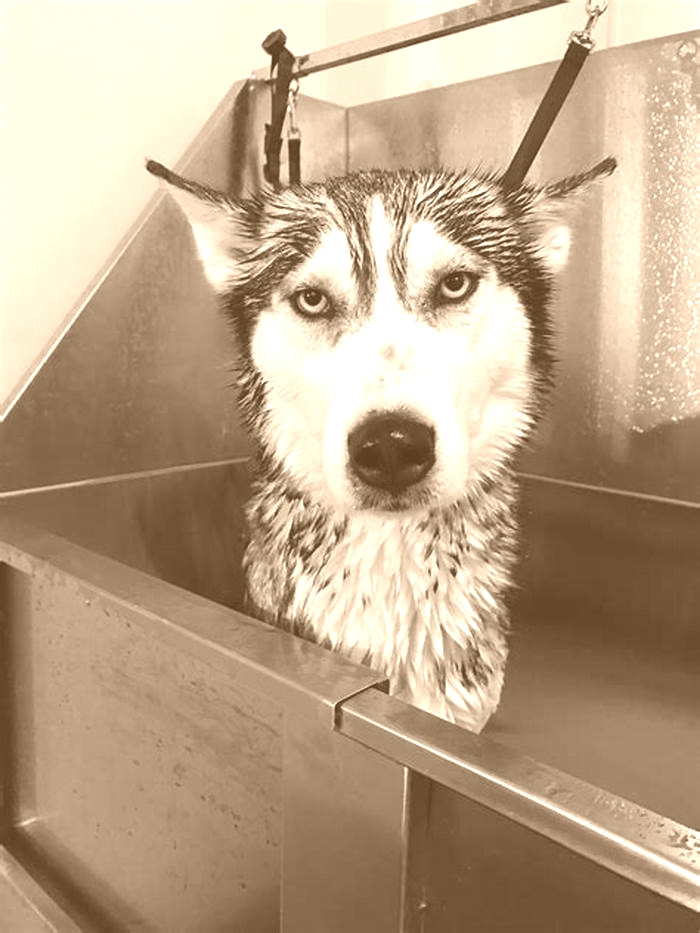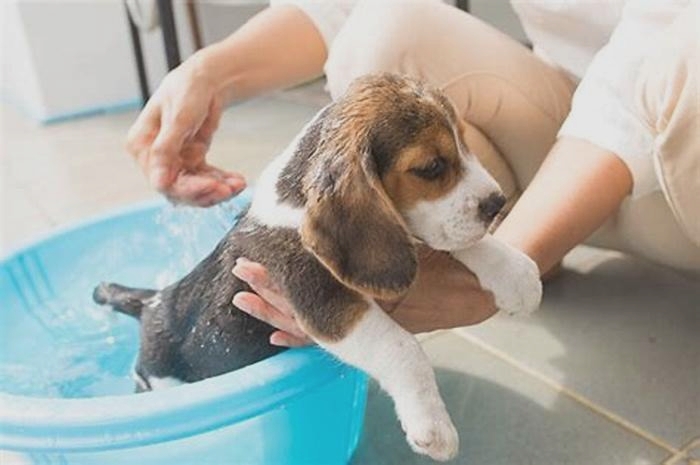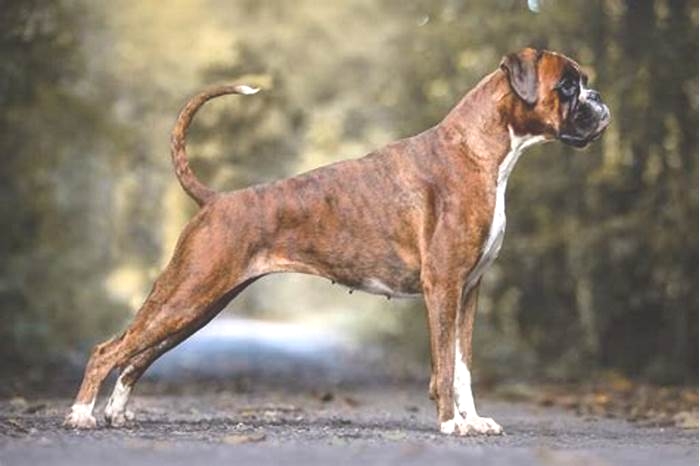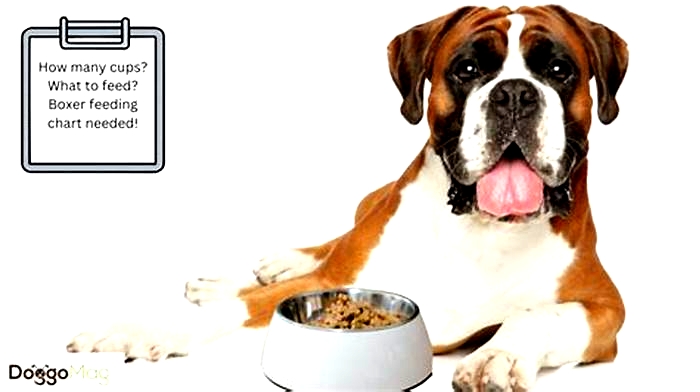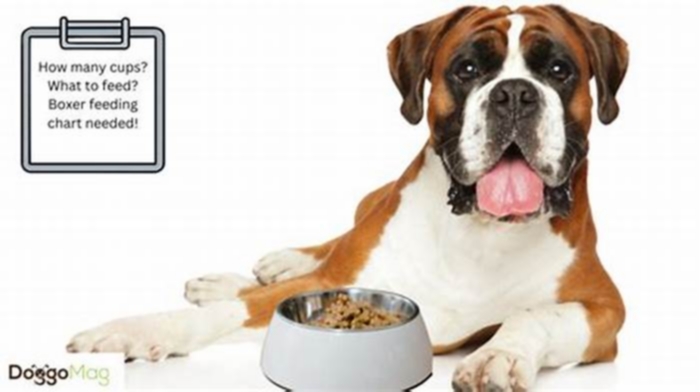How often should I bathe a Boxer
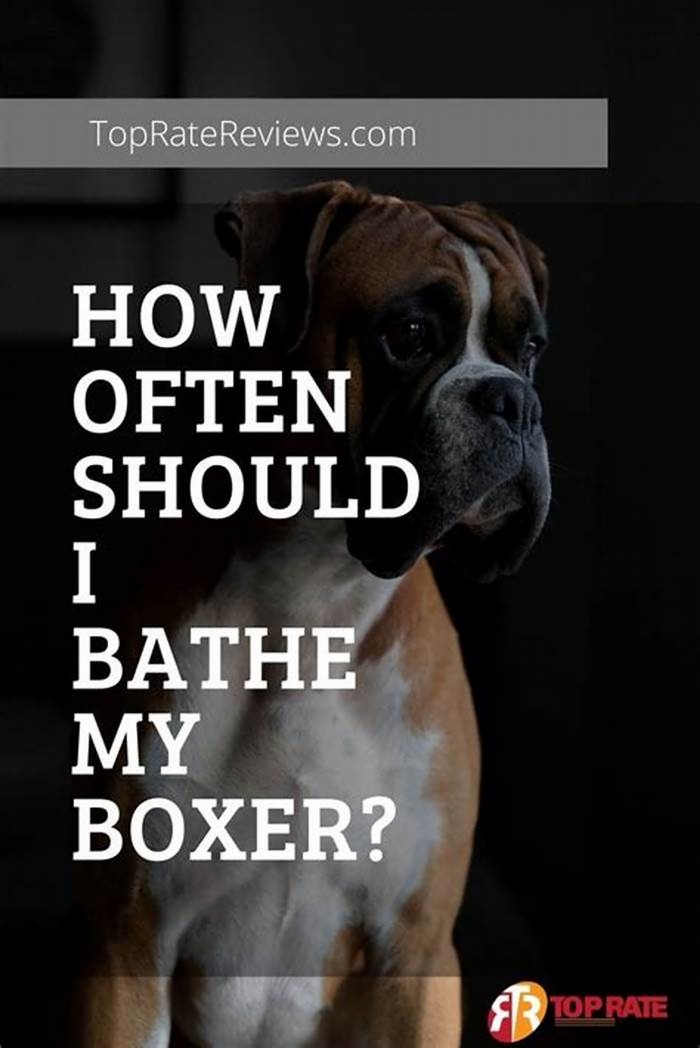
Itchy Boxer? You Might Be Bathing Too Often
Boxer dogs are very low maintenance and need almost no grooming.
Their short, tight-fitting coats mean Boxers are very clean dogs that seldom require baths.
Bathing a Boxer too often can strip essential oils, causing skin problems and itchiness.
A bath every three months at most works well for a Boxer.
Four baths per year is much less often than most owners think is necessary.
Once every holiday season is one way to remember.
Dont Wash A Boxer Too Much
Overwashing is a common problem in pet dogs.
By removing oils that protect and moisturize, washing can dry out the skin and lead to microfissures.
These tiny cracks make the skin more vulnerable to environmental irritants.
Some owners also find counterintuitively that frequent baths can make a Boxer itch, smell worse and contribute to excessive shedding.
(The fastest way to achieve zero doggy odor and a healthy coat is from the inside out.
Ditch highly processed dog food in favor of a natural canine diet i.e. a raw meaty bone-based diet and youll notice the transformation.)
Dont wash your Boxer unless he actually needs it.
Having said that, Boxers are active, fun loving dogs and can get themselves gloriously filthy.
Wiping your Boxer over with a warm, damp cloth or hosing him down will usually be enough to keep clean between full baths.
Or, pop your pup in the shower and give him a rinse with water-only. That way you remove the dirt but retain the skins precious oils.
For city-dwelling Boxers, a regular wipe-over can be a good idea to get rid of airborne pollutants and other toxins like lawn care chemicals that might otherwise accumulate on a dogs skin.
Left on the coat, these toxins can irritate the skin, transfer to your Boxers bedding or even be ingested when your dog grooms himself.
How To Bathe A Boxer Dog: 10 Easy Steps
Follow these steps for a successful bathtime with your Boxer:
- Keep it short. Baths involve a degree of stress for most dogs, even ones that tolerate it well. Make sure you have everything you need within reach, be methodical and dont dilly dally.
- Use a bathmat to avoid slipping. If youre washing your dog inside, be sure to put down a rubber suction-cap mat (or even just a towel) so that your Boxer can get a firm footing. Sliding around in a bathtub or on slick tiles will make a bath frightening.
- Tepid water. Dogs like water a little cooler than we prefer. Always test the water temperature first, as you would for a baby, and keep it just slightly warm.
- Talk soothingly to your Boxer throughout the bath to reassure him.
- Avoid wetting the face. Wipe your Boxers head over with a warm damp cloth, paying particular attention to the creases on his chin and muzzle (be sure to dry these well too).
- Keep the ears dry.
- Rinse thoroughly to prevent irritation from residues.
- Avoid additional conditioning products or perfumed sprays (The fewer chemicals the better for your dog to inhale or lick off his fur later.)
- Towel down your Boxer well afterwards and keep him warm until hes fully dry.
- Be sure to dry between the toes and underneath the paw pads so those crevices dont remain damp.
Unless your Boxer absolutely loves baths, dont call him to come to you for a bath.
Instead, go and get him. Using Come for something he considers less than pleasant will weaken the command.
For your dogs own safety you need your recall to be strong and always immediately obeyed.
Best Shampoo For Boxers
Find a natural shampoo with simple, identifiable ingredients.
Avoid scented and strong-smelling products and ones that contain artificial ingredients.
Boxer Dog Diaries is reader-powered. If you make a purchase via a link I share, I may receive a small commission, at no extra cost to you.
Something as simple as Castile soap works great.
There are also shampoos or bars made with essential oils that are gentle on a Boxers skin.
Useful Equipment For Boxer Bathtime
One piece of equipment that comes in super handy for stress-free bathtime is a hand-held shower head with long hose (the long hose is important, so it reaches to the ground where your dog is).
It beats trying to ladle water over your Boxer to rinse him off and will drastically cut the time taken to get him clean.
A designated quick-dry towel will avoid every towel in your closet becoming a dog towel.
If its cold, a hair dryer on the coolest setting might be useful, but acclimate your dog gradually to the noise.
A simple hair dryer will get the job done.
Dont forget to dry between the toes and dont hold it too close or youll risk burning your Boxers skin.
Dealing With Fleas On A Boxer
If you think its possible your Boxer has even a single flea, put a ring of suds around the neck right at the start of the bath.
This way, any fleas on your dogs body cant hide out on his dry head, waiting to reinfest his body once the bath is over.
They will be driven into the soapy rim and die.
If your dog has any fleas, make sure you wash the bedding and vacuum the house as well.
Otherwise the fleas will just hop back on your dog from his environment.
Flea eggs that have fallen off his fur will hatch and before you know it youll be back where you started.
Its good practice to wash your Boxers bed whenever you bath him, just in case.
(Remember to use very mild, natural washing powder and to put your dogs bedding through an extra rinse cycle to remove any chemicals that could cause irritation.)
Soap Berries are a great, non-toxic option for laundering your pups bedding and clothes.
If your dogs bedding is a lost cause, it might be time for a new bed.
Avoid avoid chemical flea and tick meds at all costs.
There are facebook communities full of owners whose dogs including Boxers have suffered severe reactions up to and including seizures and death from these products, which are recognized as neurotoxic and often combined with wormers.
There is likely a stacking effect with toxic accumulation, which means toxins can build up in your dogs system over time.
Your dog may get away without any problems for a while, but the next dose can be the straw that breaks the camels back.
This warning applies particularly to products that are ingested, but collars impregnated with pesticides have also caused nasty side effects in dogs and cats.
Your dogs best defence against fleas is being properly fed and brimming with vitality.
Many dogs lifestyles mean their exposure to parasites including fleas is very low.
Owners often find raw-fed dogs display a natural resistance to parasites including fleas and intestinal parasites or worms.
One of the most powerful demonstrations of this was a landmark, decade-long study done on cats fed raw diets versus those fed cooked food.
The study is documented in a book called Pottengers Cats.
The findings, of course, apply equally to dogs and to any species that strays from its natural diet.
Pottengers observations align with the terrain theory of health, which contends a healthy internal environment is less susceptible disease, parasitic and otherwise.
If necessary, there are a range of natural alternatives to chemical products to deter and treat fleas.
There is no substitute for vigilance.
Spot a flea, stick your dog straight in the bath.
Any basic shampoo will kill fleas on contact, by compromising their exoskeleton and causing them to drown.
Beneficial nematodes are a 100 per cent non-toxic and highly effective way to kill fleas living in the ground around your house.
Garlic yard sprays are another option.
How Often Should You Brush A Boxer Dog?
Boxers require very little brushing.
There is no long hair to detangle or thick coat to maintain.
A Boxer will appreciate a weekly brush with a grooming mitt, to remove loose hairs and massage the skin.
The firm stroking motion also promotes lymph drainage, similar to a technique known as dry brushing.
A Boxer should be brushed from puppyhood, so he learns to behave.
Most will love the attention.
Check Your Boxers Body
Both baths and brushing are a good chance for you to inspect your Boxers skin.
If you notice any thinning of the hair in patches on the flanks, it could be seasonal flank alopecia.
Familiarize yourself with how the different parts of his body normally look and feel, so that youll be able to identify any changes.
In a male, intact Boxer this includes the testes.
Look in your dogs mouth and touch his teeth, lips and gums.
Know what color his gums are when hes healthy.
Examine his eyes, look inside his ears and handle his paws, touching his nails and running your fingers between his paw pads.
Its good to get your Boxer used to having all his nooks and crannies poked and prodded while hes a puppy.
This way you set him up for much less stress if hes ever sick or injured and these parts of his body need examining.
Cutting A Boxer Dogs Nails
The most a Boxer requires in the way of regular grooming is nail trimming.
A grinder is a fast, safe way to grind your dogs nails.
Unlike cutting with guillotine-style scissors, a grinder poses no risk of accidentally cutting the quick, with its nerves and blood vessels.
The worst that can happen with a Dremel is a scrape.
Your Boxers nails should be kept short, close to the pads.
A dogs nails should never touch the ground when standing.
Overgrown nails can cause discomfort and pain, distort a dogs posture and interfere with the gait.
When A Boxer Dogs Nail Quicks Are Too Long
If your Boxers quicks are so long that you cant grind the nails short enough, youll need to work on getting the quicks to recede.
This can be achieved by grinding the nails as short as possible, so that the quicks are right at the edge of the nail.
Then, grind the tiniest bit more every day.
The quicks will gradually shorten and you will, over a period of weeks to months depending on the starting point, have the nails the right length.
Discolored Nails On A Boxer
Its not unusual for owners to observe previously white or clear nails on a Boxer turning brown.
This discoloration (as distinct from naturally black nails) can be accompanied by a reddish brown staining of the hair between the toes and paw pads.
Though quite common, this is not normal in a healthy dog.
Often labelled as a yeast infection, its useful to ask: Whats causing the yeast?
A dogs skin, like a humans, is normally inhabited by a range of bacteria and yeasts.
Any overgrowth of these microbes can only happen when there is an excess of wastes being excreted through the skin.
This waste provides the nutrients for the yeast.
Sometimes the yeast will also cause paw licking or gnawing.
Remove the cause of the excess waste and the food source will decline and the yeast will fall back to normal levels.
So why would a dogs skin excrete more waste than usual?
Ordinarily, waste exits the body through the primary organs of elimination.
However, when the bowels and kidneys are overburdened, symptoms typically show up in the skin.
The skins role in eliminating wastes is why its sometimes called the third kidney.
In dogs, symptoms of toxicity or an overburden of wastes commonly appear not only in the skin, but also in the ears, eyes and paws.
Discolored nails and paw fur caused by yeast overgrowth can generally be resolved with a fresh, raw diet and pure water as well as discontinuation of chemical wormers/flea and tick preventatives and avoidance of other sources of toxicity.
It will take time.
(If the dogs feet are constantly wet this warm and moist environment will also encourage the growth of yeast. This is why its important to dry your dogs paws after a bath.)
Boxer Dog Anal Glands
Because theyre so easy care, Boxers arent the kind of dogs that typically end up at a dog grooming salon.
There is no thick coat to clip or shape.
Boxers require no primping or preening.
However, if you do take your dog to a salon, make sure the groomer does not express your dogs anal glands.
This is an add-on service sometimes offered by groomers but it is absolutely not appropriate in a healthy dog.
Problems with the anal glands are most likely indicative of something wrong with the diet.
In a properly fed dog, the scent-glands around a dogs anus maintain themselves.
Aside from general good health, the firm, hard poops produced by raw feeding help express the glands naturally each time a dog defecates.
Boxer Dog Ears
Your Boxers ears should not require any cleaning.
If you ever notice any build-up of wax, the most you need to do is remove it with a soft cotton pad folded into a point.
Any ear gunk (or eye gunk) should prompt a reevaluation of the diet to make sure your Boxer is being fed fresh, real food and clean, pure (not tap) water.
As long as this is the case, a day or twos fasting will usually see any ear gunk or eye discharge quickly clear.
If problems persist, reevaluate. Always seek veterinary attention if youre in doubt.
Boxer Dog Tear Stains
As with nail discoloration, tear stains are common but not normal.
They particularly mar the faces of white Boxers.
There are many tear stain remover products and home remedies, but you do not want to be putting these substances near your Boxers eyes.
And cleaners do nothing to resolve the cause of the staining.
Tear stains tend not to occur in a Boxer that is:
- Being properly fed (fresh, raw food not kibble)
- Drinking pure water (Boxers should never drink water out of the faucet which contains a plethora of contaminants)
- Not being dosed with chemical wormers
- Not ingesting or receiving topical flea and tick treatments, and
- Not being given too many shots.
If your Boxer has unsightly tear stains, rather than adding drugs, try taking away the kibble, tap water and chemical treatments.
Allow some time for the toxins to clear your dogs system before expecting the stains to clear up.
How Often Should You Wash A Boxer Puppy?
Boxer puppies require washing possibly even less often than adult Boxers.
They need their natural oils as much as adults for a healthy coat and skin.
The main purpose of washing a Boxer puppy is to get your dog used to the experience.
If your dog learns early that bathtimes are nothing to worry about, they wont be distressing later in life.
To bathe a Boxer puppy, follow the same steps as for an adult with the possible addition of some treats to cement bathtime as a positive experience in your dogs mind.
Conclusion: Washing A Boxer Dog
Less is more when it comes to keeping your Boxers coat in optimal condition.
Keep baths to a minimum to avoid creating skin problems.
If you notice any problems with your Boxers coat or skin, consider what you are feeding as the most likely culprit.
Its always preferable, and most effective, to optimize the diet rather than attempt to suppress symptoms by medicating your dog.
Drugs inevitably come with side effects, some of which dont show themselves immediately but can end up being more serious than the original condition you were trying to treat.


